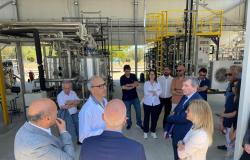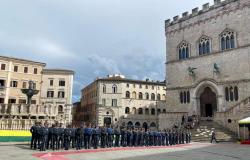A skein that unravels after over 30 years. The alleged murderer of Pierangelo Fioretto and his wife, Mafalda Begnozzi, killed on the evening of 25 February 1991 in the courtyard of their home in contra’ Torretti, in Vicenza, was arrested by the Vicenza flying squad. For the police, Umberto Pietrolungo58 years old, affiliated with the gang ‘Ndrangheta member Muto, active in Cetraro, in the Cosentino area, in prison in Cosenza since 2022 for other crimes, he is the author of the double crime.
The fingerprint on the silencer and the DNA on a glove
To allow trace the alleged murderer were the fingerprints partial digital on the silencer of a gun And DNA detected in a glove used for assassination. Pietrolungo’s mug shots therefore allowed some witnesses, even more than thirty years after the fact, to recognize the alleged perpetrator of the double crime. Pietrolungo, as mentioned, was arrested by the order in prison in Cosenza.
The crime
Thus came the turning point in one of the most mysterious “cold cases” in the Veneto. On the evening of February 25, 1991, Pierlangelo Fioretto, a 59-year-old lawyer, returning home from the law firm where he had worked all day, found two people waiting to kill him. A full-blown execution: four gunshots, the last shot point blank on the back of the head. Mafalda Begnozzi, 52 years old, hearing screams, went down to help her husband: the killers killed her immediately, with a final shot fired in the head when she was already on the ground, to make sure she was dead. «This morning I was notified of the arrest, but I still don’t know who it is – said Giampaolo Fioretto, Pierangelo’s brother -. It’s a satisfaction, I’m happy that justice has finally triumphed.”
DNA and the special team for unsolved crimes
The case of the Fioretto spouses had been reopened in 2012 by the Vicenza prosecutor’s office, thanks also to the team created by the Ministry of the Interior for unsolved crimes and to the use of a series of new technologies, such as those which, twenty years later, were able to give a name and face to the murderer of the 42-year-old countess Alberica Filo Della Torre, killed the 10 July 1991 in his villa in Olgiata, a residential area north of Rome. In the case of the Fioretto crime, the alleged killer’s DNA was isolated in a laboratory Roman after the head of the Flying Squad of those years had fished out the finds dating back to ’91 from the basement of the Vicenza court: the clothes worn by Fioretto, his wife’s shoes, the guns (with relative silencers) found along the escape route used by the killer and, above all, three gloves. The fragments of the first two – in green plastic material, for surgical use – had been found in Santa Lucia, not far from the crime scene. The third, in dark leatherfound in Piazza XX Settembre, bore traces of gunpowder relating to the shots aimed at Fioretto and his wife. Three fingerprint fragments remained on one of the silencers of an inch: taken and subjected to examination with the techniques of the time, they had proven not useful for a comparison “due – the police technicians wrote – to their small size”.
The turning point
Without terms of comparisonthe power of attorney had requested and obtained the dismissal of the investigation, on 3 December 1996. On 20 January 2012, however, the Interregional cabinet of scientific police of Padua, in light of new investigative techniques, in particular those based on genetic profiles, he asked to be able to re-examine the old findings. The genetic profile was then extracted from the leather glove, attributable to an unidentified male subject. For the breakthrough had to wait another eleven years: February 24, 2023 the Central anti-crime directorate of the police reported a positive agreement «at the first level» between the profile detected on the Vicenza glove and some samples organic extracts from the Carabinieri of Scalea, Cosenzafrom artefacts recovered at the site of a shooting in Cirella di Diamante, on 8 January 2022, inside the San Daniele hotel. From the bulb of a hair found on a handkerchief “saved” in Cirella, the police extracted a genetic profile totally compatible with that obtained from the oral swab which Umberto Pietrolungo had been submitted in the context of a criminal proceeding initiated by another Cosentino prosecutor’s office, that of Castrovillari. Having put all the pieces in place, unless proven otherwise, the puzzle of the double crime of the lawyer Fioretto and his wife has thus been entirely recomposed.
The investigation continues
And the motive? It still remains in the shadow. According to investigators, in 1991 the 25-year-old Pietrolungo had acted on commission: a young killer hired by someone, perhaps by the local underworld. The investigation continues in an attempt to identify the second killer seen in contra’ Torretti on the evening of February 25th 33 years ago.





